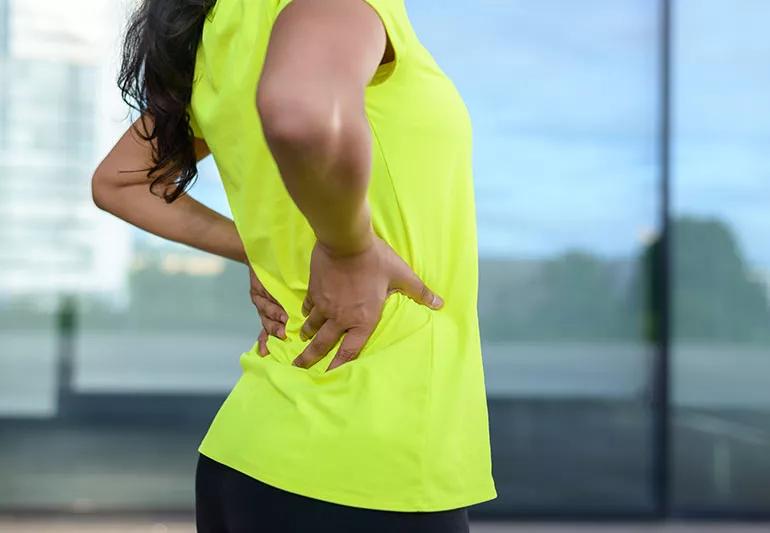Improved implants and techniques allow for safer use in younger patients

Osteoarthritis is a condition in which the cartilage, or cushion, that surrounds and protects the ends of the bones in the joint wears out.
Advertisement
Cleveland Clinic is a non-profit academic medical center. Advertising on our site helps support our mission. We do not endorse non-Cleveland Clinic products or services. Policy
When non-operative interventions, such as non-steroidal anti-inflammatory drugs like ibuprofen, no longer work, many elect for total hip replacement surgery.
These types of surgeries used to be reserved for those over 65, but as orthopaedic surgeon Peter Surace, MD explains, an increasing number of younger people are having hip replacements due to advanced osteoarthritis in the hip joints.
When hip pain begins to interfere with activities and hobbies you enjoy, seeking out a professional opinion with an orthopedic surgeon can help determine the available options.
“Often, the pain can be managed with non-operative interventions, especially in the earlier stages of arthritis,” says Dr. Surace. He says treatment such as oral or topical anti-inflammatories, a specific exercise program, some activity modification or formal physical therapy can get many patients back to their active lifestyle. But when these options fail to provide relief, surgery may be an option.
Data released from the National Hospital Discharge Survey confirm a trend that has long been predicted. According to the research, the total number of hip replacements performed increased from 138,000 in 2000 to more than 310,000 in 2010. In the youngest age group, ages 45 to 54, there was a 200% increase.
There are a number of reasons for the increase, especially among the younger patients. First and foremost, a total hip replacement is a very successful procedure. Patients debilitated by hip pain see friends and neighbors return to an active lifestyle shortly after having hip replacement surgery. “Most people can return to most activities, including sports, successfully after a hip replacement,” says Dr. Surace.
Advertisement
Another reason for the increase in hip replacements in younger patients is the improvement in technology seen over the past 10 years to 15 years.
Newer materials mean the implants used in hip replacements last longer than ever. Currently, based on data available, it is estimated that there’s a 90% chance implants being used today are still functioning well at 20 years, with many lasting longer than that. And once these implants have reached their limit, the revision now is usually a simple modular exchange instead of a larger revision of all components. As a result, many patients who were once told they were “too young” for hip replacement are now able to undergo surgery and return to their active lifestyle.
As a result of advanced therapy protocols, the hospital stay and time to recover have greatly decreased. “Our average hospital stay is about 1.5 days for all people, and less than that in the younger population,” says Dr. Surace. He says it’s not uncommon to see people able to walk without assistive devices in as little as two to three weeks, and patients often can return to work in the same time frame, depending on their job requirements and motivation.
If hip pain is inhibiting your lifestyle, talk to your doctor. Many non-surgical and surgical options are available to help manage your pain and get you back in the game.
Advertisement
Learn more about our editorial process.
Advertisement

Plus, tips on how to recover

Freedom from pain can restore intimacy

After knee arthroplasty, swelling-related pain is common, but infection and blood clots are also risks

Stretching and strengthening your hips can help improve flexibility and relieve pressure

Hanging upside down for any length of time may decompress the tension in your spine

Stretches, exercises and posture changes can help address lower cross syndrome

These creams that you apply to your skin can actually help reduce localized pain, swelling and inflammation

This satisfying, involuntary act of yawning and stretching helps release tight muscles

Start having sex about 72 hours before ovulation, then at least every other day during your fertile window

Attachment theory suggests that your earliest relationships shape connections throughout your life

It isn’t a recognized mental health disorder, but research shows that problematic social media use can negatively affect your mental health, self-esteem and sleep